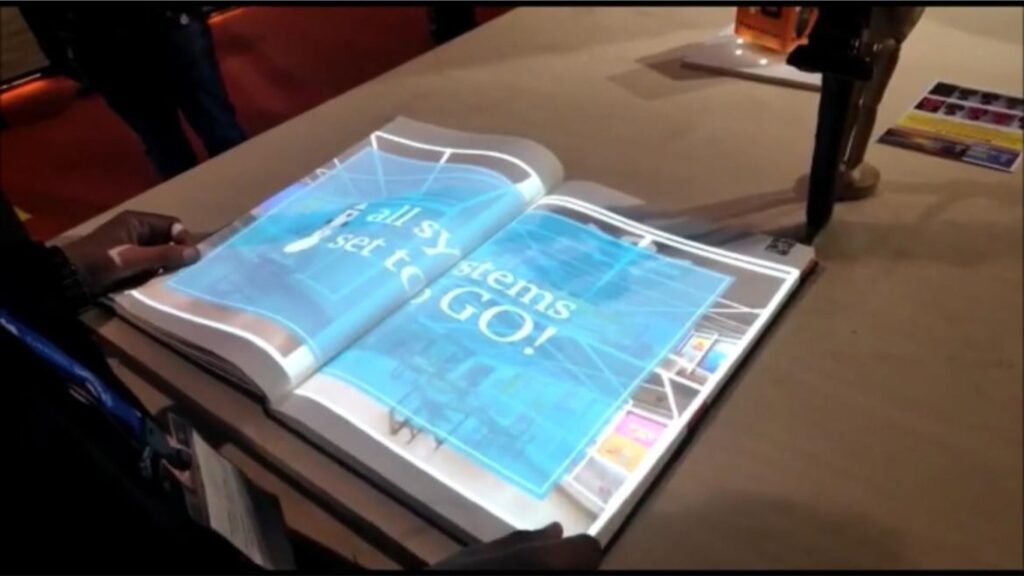
A flipbook typically contains a sequence of images & animation that tell a story or depict a specific message, and the viewer can flip through the pages to see the images in motion. Flipbooks are often used in experiential marketing as a way to create a fun and engaging experience for consumers.
In a marketing context, flipbooks can be used to tell a brand story, demonstrate a product, or showcase a service. For example, a flipbook could be created to showcase the different features of a new car model or to demonstrate a brand’s commitment to sustainability by showcasing a recycling process.
Digital flipbook activation can provide several benefits for exhibitors, especially in the context of events and trade shows.
Here are some ways in which it can be beneficial:
-
Interactive and Engaging Content: Exhibitors can use digital flipbooks to create interactive and engaging content that can capture the attention of event attendees. With features like videos, animations, and interactive elements, digital flipbooks can provide a more immersive experience than traditional print materials.
-
Cost-effective: Digital flipbooks can be a cost-effective alternative to printed materials, such as brochures, flyers, and catalogues. They can be easily created and updated without the need for printing and shipping costs.
-
Environmentally Friendly: With the increasing emphasis on sustainability, digital flipbooks can help exhibitors reduce their environmental footprint by eliminating the need for paper and printing.
-
Analytics: Digital flipbooks can provide valuable insights into user behaviour and engagement. Exhibitors can track metrics such as views, time spent on each page, and click-through rates to understand which content is resonating with their audience and adjust their strategy accordingly.
-
Customizable: Digital flipbooks can be easily customized to match the branding and messaging of the exhibitor. They can incorporate colours, fonts, and images that align with the company’s visual identity and marketing strategy.
-
Easy to Update: Digital flipbooks can be updated and modified quickly and easily, without the need for reprinting or redistributing physical copies. Exhibitors can make changes in real time, ensuring that the content is always up-to-date and relevant.
-
Lead Generation: Digital flipbooks can be used to capture leads by including forms, surveys, and calls to action. Exhibitors can gather contact information from interested attendees and follow up with them after the event
Overall, digital flipbook activation can provide exhibitors with a versatile and powerful tool to create, distribute, and track content at events and trade shows. It can help them save costs, reduce environmental impact, increase engagement, and generate leads.
Digital flipbook activation has become increasingly popular in trade shows and exhibitions in recent years. With the growing emphasis on digital marketing and the need to create engaging and interactive content, many exhibitors have turned to digital flipbooks as a way to showcase their products and services.
Digital flipbook activation is a growing trend in trade shows and exhibitions and is likely to continue to gain popularity as exhibitors seek to create innovative and engaging content that can capture the attention of attendees.
However, BeeNexus has a great track record of providing best-class services. If you are looking for any corporate marketing events then give us a chance & we will make sure it’s memorable.
Chirag Rastogi
Founder and CEO @ BeeNexus | Marketing, Growth, Business Development


